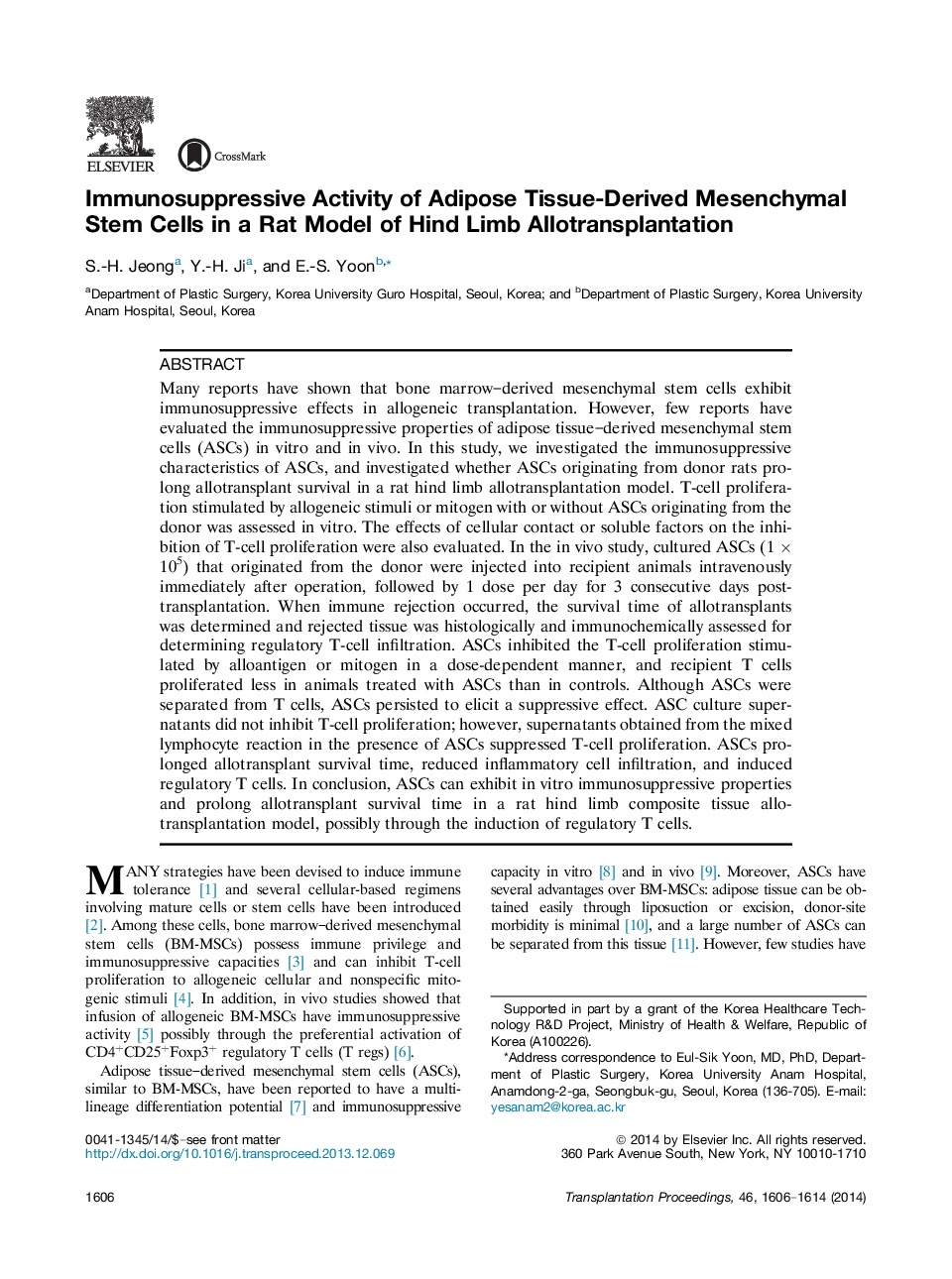| Article ID | Journal | Published Year | Pages | File Type |
|---|---|---|---|---|
| 6246336 | Transplantation Proceedings | 2014 | 9 Pages |
Many reports have shown that bone marrow-derived mesenchymal stem cells exhibit immunosuppressive effects in allogeneic transplantation. However, few reports have evaluated the immunosuppressive properties of adipose tissue-derived mesenchymal stem cells (ASCs) in vitro and in vivo. In this study, we investigated the immunosuppressive characteristics of ASCs, and investigated whether ASCs originating from donor rats prolong allotransplant survival in a rat hind limb allotransplantation model. T-cell proliferation stimulated by allogeneic stimuli or mitogen with or without ASCs originating from the donor was assessed in vitro. The effects of cellular contact or soluble factors on the inhibition of T-cell proliferation were also evaluated. In the in vivo study, cultured ASCs (1 à 105) that originated from the donor were injected into recipient animals intravenously immediately after operation, followed by 1 dose per day for 3 consecutive days post-transplantation. When immune rejection occurred, the survival time of allotransplants was determined and rejected tissue was histologically and immunochemically assessed for determining regulatory T-cell infiltration. ASCs inhibited the T-cell proliferation stimulated by alloantigen or mitogen in a dose-dependent manner, and recipient T cells proliferated less in animals treated with ASCs than in controls. Although ASCs were separated from T cells, ASCs persisted to elicit a suppressive effect. ASC culture supernatants did not inhibit T-cell proliferation; however, supernatants obtained from the mixed lymphocyte reaction in the presence of ASCs suppressed T-cell proliferation. ASCs prolonged allotransplant survival time, reduced inflammatory cell infiltration, and induced regulatory T cells. In conclusion, ASCs can exhibit in vitro immunosuppressive properties and prolong allotransplant survival time in a rat hind limb composite tissue allotransplantation model, possibly through the induction of regulatory T cells.
